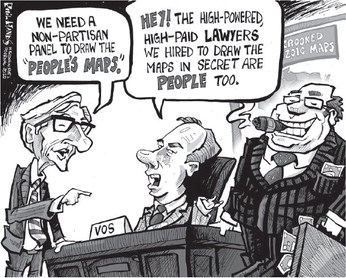Wisconsin needs to take party politics out of redistricting


When it comes to politics, Wisconsin is a very purple state.
In some elections and on some issues the state swings toward Republican red and at other times ...


When it comes to politics, Wisconsin is a very purple state.
In some elections and on some issues the state swings toward Republican red and at other times ...